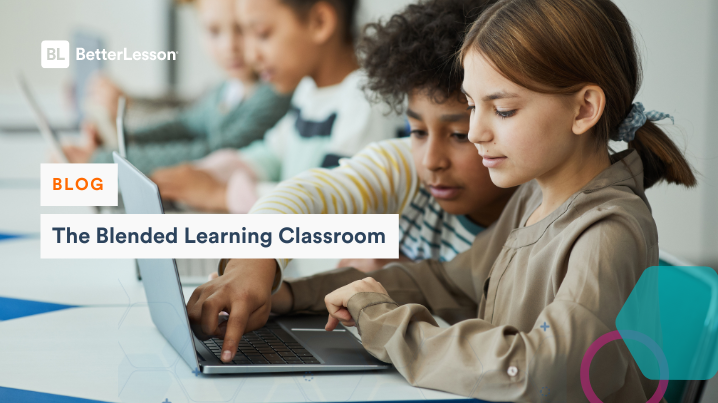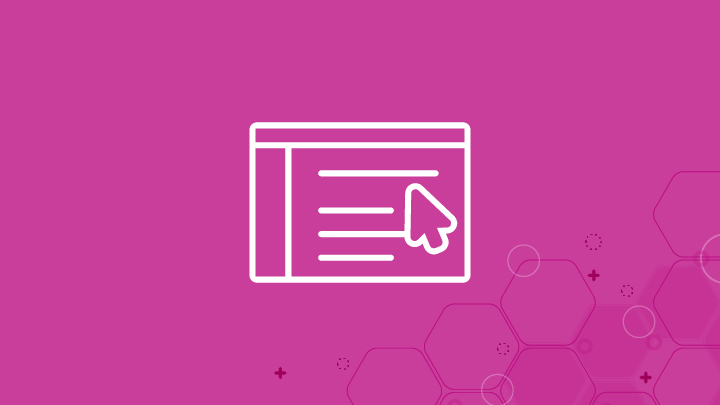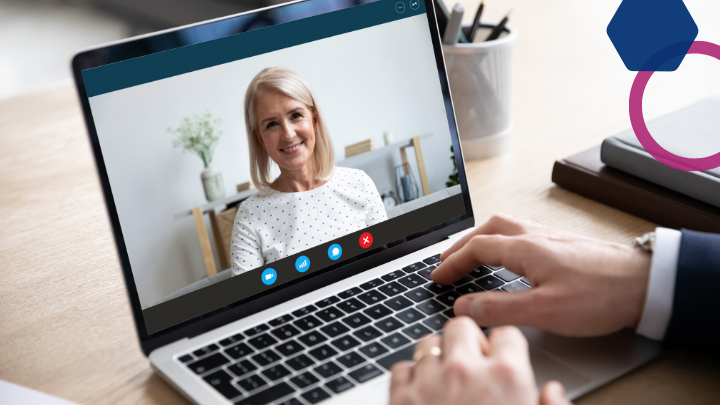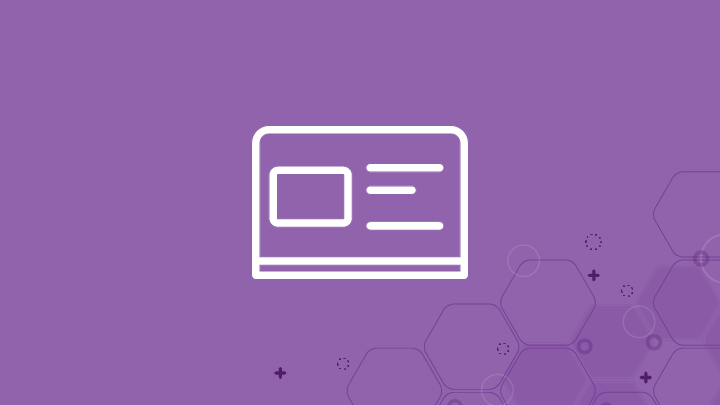While Blended Learning is a term that many educators and school leaders have heard, fewer education professionals are familiar with the research behind this approach and the instructional strategies associated with this pedagogy. In this blog, we will dive deeper into what defines Blended Learning, why it’s important, and how to implement effective Blended Learning strategies.
What is Blended Learning?
Blended Learning is a Flexible Instructional Model in which technology is integrated to create personalized learning experiences for students. By designing learning around flexible time and space, personalized tasks, meaningful use of technology, and responsive teaching through a student-centered approach, students in effective blended learning classes will build autonomy, learn important skills for their future, and engage in a more effective learning environment.
In this way, Blended Learning is an essential component of differentiated learning. It allows educators to respond to the individual needs of students and to ensure that every student has access to engaging and appropriately-challenging academic experiences.
With the proliferation of technology in education, Blended Learning offers an approach that centers the meaningful and intentional use of technology. Rather than integrating technological resources to simply check an instructional box, Blended Learning looks for uses of technology that align with specific pedagogical outcomes tied to student autonomy, differentiation, and student-centered learning.
Why is a Blended Learning Classroom Important?
The beneficial impacts of Blended Learning are deeply affirming of the instructional strategy. These benefits point to why this approach to classroom teaching is necessary and timely. While there are many reasons why Blended Learning is important for today’s classrooms, let’s look at a few key impacts:
Teaching Technology
Technology is and will increasingly be an inevitable presence in our students’ lives. Schools have an obligation, then, to model and teach the responsible and productive use of technologies. With Blended Learning’s emphasis on the meaningful application of technology, students are able to practice using technology for specific outcomes and purposes, and they are able to learn and develop a level of comfort navigating new technologies. These digital literacy and competency skills will position students for success within and beyond the classroom.
Improving Academic Achievement
Blended Learning is also an evidence-based practice that is shown to have positive academic outcomes. Research published in Science Direct found that Blended Learning “increased student interactions with teachers and improved students’ academic achievement, self-study abilities and learning attitudes.” This research exemplifies the depth of Blended Learning’s academic impacts: not only do student outcomes improve, but the ways in which they engage in their own learning becomes more dynamic by increasing both collaboration and capacity for independence.
Supporting Students with Special Needs and/or Disabilities
With its focus on personalized learning experiences, Blended Learning ensures that students with special learning needs and/or disabilities have access to academic content aligned with their goals and needs. Beyond increased access to learning, Blended Learning is proven to improve learning outcomes for students with special needs or learning disabilities. In fact, research published in the Journal of Education and Training Studies offers this compelling finding: “The blended classroom room has demonstrated effectiveness in teaching core concepts and increasing the overall assessment of students with special needs and learning disabilities.” As such, Blended Learning is an instructional strategy that centers accessibility and inclusion for all students.
How Can Teachers Integrate Blended Learning?
Understanding the basics of Blended Learning and its transformative impact on classrooms is a critical step towards implementation, but the challenges and opportunities come when teachers and schools seek to integrate this instructional framework into their classrooms. Luckily, there are tangible instructional strategies and pedagogical shifts that can support the transition to a Blended Learning classroom. Here, we will share some specific instructional strategies created by BetterLesson Master Teachers that can be implemented today!
Instructional Strategy: Strategic Design of Blended Learning
Big Idea: This strategy walks teachers through the steps of intentionally designing learning for a blended setting where digital and in-person elements come together to empower students to drive their own learning.
Instructional Strategy: Backchannel to Support Student Autonomy and Ownership
Big Idea: A backchannel is a conversation that takes place alongside an activity or an event. This strategy will help thinking thoughtfully about the creation and management of a backchannel process to support student autonomy and ownership, in particular during activities where students can progress at their own pace.
Instructional Strategy: Improving the Effectiveness of a Blended Learning Playlist or Pathway
Big Idea: This strategy provides resources for teachers to implement effective blended learning pathways that provide opportunities for goal-setting, reflection, feedback, and student choice.
Instructional Strategy: Developing Norms and Expectations for Digital Tool Use
Big Idea: This strategy empowers students to have a voice in the setting of norms and expectations which increases student motivation to follow the norms and expectations.
Instructional Strategy: Self-Reflection Tools for Hybrid/Virtual Learning
Big Idea: This strategy can be used daily or weekly during hybrid/virtual learning and will help promote deeper learning with all students and foster greater student-teacher relationships during hybrid/virtual learning.
Instructional Strategy: Digital Portfolios
Big Idea: This strategy walks through steps for students to create a digital portfolio, an ongoing document or file utilizes mediums like video recordings, audio files, hyperlinks, and so much more to demonstrate a student’s learning.
Instructional Strategy: Selecting and Using the Appropriate Digital Assessment Tools for Feedback
Big Idea: In this strategy, teachers can learn how to utilize tools to provide both on the spot and delayed feedback as well as empower students to give and receive peer feedback.
Even with these strategies as a resource, creating a Blended Learning Classroom can seem daunting or overwhelming. This is particularly true for schools and teachers who are less familiar with educational technologies. However, with professional support and training, the stress and overwhelm of transitioning to Blended Learning classrooms and implementing new instructional strategies can be replaced with excitement and confidence. BetterLesson is here to provide personalized support for districts interested in utilizing Blended Learning instructional strategies, from meaningful integration of technology to student-centered learning.
If you’d like help creating a Blended Learning Classroom, we can help!
Get in Touch







